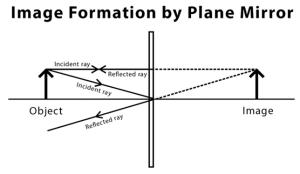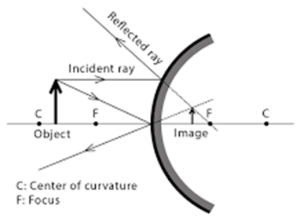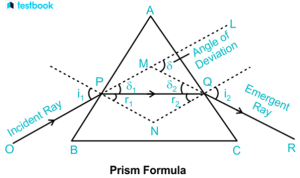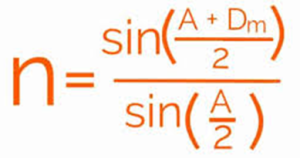16.0 INTRODUCTION
Light energy is a kind of kinetic energy with the ability to make types of light visible to human eyes. Light is defined as a form of electromagnetic radiation emitted by hot objects like lasers, bulbs, and the sun.
SOURCES OF LIGHT
- Natural Sources of Light: These are sources that occur in nature without human intervention.
- The Sun: The primary source of natural light on Earth.
- Stars: Other celestial bodies that emit light.
- Artificial Sources of Light: These are man-made sources that produce light. Examples include:
- Incandescent bulbs: Produce light by heating a filament.
- Fluorescent lamps: Use gas and phosphor to emit light.
LUMINOUS OBJECTS: Objects that emit their own light. Examples include the Sun, stars, and light bulbs.
NON-LUMINOUS OBJECTS: Objects that do not emit light but can reflect light from luminous sources. Examples include the Moon (reflects sunlight), a book, or a wall.
16.1 PROPAGATION OF LIGHT
Light travels at a speed of approximately 3 x 108 m/s in a vacuum.
Frequency (f) and wavelength (λ) are related by the equation:
c = f * λ (where c is the speed of light)
Higher frequency corresponds to shorter wavelength and vice versa.
16.2 FORMATION OF SHADOWS AND ECLIPSE
SHADOWS: They are formed when an opaque object blocks the path of light.
The size and shape of the shadow depend on the position of the light source and the object.
ECLIPSE: An eclipse occurs when one celestial body moves into the shadow of another.
TYPES OF ECLIPSE
- Solar Eclipse: The Moon blocks the Sun’s light i.e. The moon is between the sun and the Earth.
- Lunar Eclipse: The Earth blocks sunlight from reaching the Moon.
16.3 THE PIN-HOLE CAMERA
The pin-hole camera is a simple camera that consists of a dark box with a small hole (pinhole) on one side. It demonstrates the principles of light propagation and image formation.
PROPAGATION OF LIGHT

A pinhole camera works on the principle of rectilinear propagation of light, meaning light travels in straight lines, and projects an inverted image of an object onto a screen behind a small hole (pinhole)
Simply, light from an object passes through the pinhole and projects an inverted image on the opposite side of the box.
16.4 REFLECTION OF LIGHT AT PLANE AND CURVED SURFACES

Light reflection occurs when a ray of light bounces off a surface and changes direction.
LAWS OF REFLECTION OF LIGHT
- First Law: The incident ray, the reflected ray, and the normal to the surface at the point of incidence all lie in the same plane.
- Second Law: The angle of incidence is equal to the angle of reflection. Mathematically, this can be expressed as:
Angle of Incidence (i) = Angle of Reflection (r)
APPLICATION OF REFLECTION OF LIGHT
- Mirrors: Used in everyday objects like bathroom mirrors, car mirrors, and telescopes.
- Optical Instruments: Periscopes and kaleidoscopes utilize reflection to direct light.
- Safety and Security: Convex mirrors are used in vehicles and at intersections for better visibility.
16.5 FORMATION OF IMAGES BY MIRRORS
PLANE MIRRORS:
- Image Characteristics: Virtual, upright, and of the same size as the object.
Ray Diagram: Draw a perpendicular normal at the point of incidence and show the incident and reflected rays.

CONCAVE MIRRORS
- Image Characteristics: Can produce real or virtual images depending on the object’s position relative to the focal point.
- Ray Diagram
- For an object beyond the centre of curvature: Real, inverted, and smaller.
- For an object at the centre of curvature: Real, inverted, and same size.
- For an object between the centre of curvature and the focal point: Real, inverted, and larger.
For an object within the focal point: Virtual, upright, and larger.
CONVEX MIRRORS
- Image Characteristics: Always virtual, upright, and smaller than the object.
- Ray Diagram: The rays diverge, and the virtual image appears behind the mirror.

USE OF THE MIRROR FORMULA: The mirror formula relates the object distance (u), image distance (v), and focal length (f) of a mirror:
1/f = 1/v + 1/u
MIRROR FORMULA SIGN CONVENTION
- For concave mirrors, f is negative.
- For convex mirrors, f is positive,
- Object distance (u) is always negative (as per the sign convention).
LINEAR MAGNIFICATION (m): It is defined as the ratio of the height of the image (h’) to the height of the object (h):
m = h’/h = -v/u
- Positive magnification indicates an upright image.
- Negative indicates an inverted image.
16.6 REFRACTION OF LIGHT
Refraction occurs when light travels from one medium to another and changes its speed. For example, light travels faster in air than in water or glass.
When light enters a denser medium (like glass), it slows down, and when it exits to a less dense medium (like air), it speeds up.
LAWS OF REFRACTION
- First Law: The incident ray, the refracted ray, and the normal at the point of incidence all lie in the same plane.
sin(i) / sin(r) = n (where n is the refractive index)
DEFINITION OF REFRACTIVE INDEX OF A MEDIUM: The refractive index (n) of a medium is defined as the ratio of the speed of light in a vacuum (c) to the speed of light in the medium.
(v): n = c/v
It indicates how much the light will bend when entering that medium.
- DETERMINATION OF REFRACTIVE INDEX OF GLASS AND LIQUID
- By Using Snell’s Law – Measure the angle of incidence (i) and the angle of refraction (r):
n = sin(i) / sin(r) to calculate the refractive index.
16.8 REAL AND APPARENT DEPTH
REAL DEPTH: The actual depth of an object submerged in a medium.
APPARENT DEPTH: The depth at which the object appears to be when viewed from above the surface.
- The relationship between real depth and apparent depth:
Apparent Depth = Real Depth × (n1/ n2)
Where n1 is the refractive index of the medium above the object and
n2 is that of the medium in which the object is submerged.
LATERAL DISPLACEMENT: The perpendicular distance between the original path of the light ray and its path after refraction.
CRITICAL ANGLE (C): The angle of incidence in the denser medium at which the angle of refraction in the less dense medium is 90 degrees.
sin(C) = n2/n1
TOTAL INTERNAL REFLECTION: Occurs when the angle of incidence exceeds the critical angle, causing all the light to be reflected into the denser medium.
MIRAGE: Occurs on hot days when the ground heats the air above it, creating a temperature gradient. Light rays bend as they pass through these layers.
16.9 MINIMUM DEVIATION OF A GLASS PRISM
Minimum deviation refers to the smallest angle by which a light beam is deviated when passing through a prism and occurs when the angle of incidence and emergence are equal.
The minimum deviation formula for a prism relates the angle of the prism (A), the angle of deviation (D), and the refractive index, is given by:


- Triangular Prism: A prism with a triangular cross-section.
- Rectangular Prism: A prism with a rectangular cross-section.
Convex and concave lenses are used to converge or diverge light.
16.10 OPTICAL INSTRUMENTS
- Microscopes: Use multiple lenses to magnify small objects The objective lens creates a magnified image, which is further enlarged by the eyepiece.
- Telescopes: Designed to observe distant objects (like stars and planets).
- Projectors: Project images onto a screen using a light source and a lens system.
- Cameras: Capture images by allowing light to enter through a lens and onto a photosensitive surface (film or sensor). The lens focuses light to create a clear image.
HUMAN EYE – The human eye functions like a camera, with the cornea and lens focusing light onto the retina. The eye adjusts focus using the ciliary muscles to change the shape of the lens.
POWER OF A LENS: Power (P) of a lens is defined as the reciprocal of its focal length (f) in metres:
P = 1/f (in diopters, D)
- A positive power indicates a converging (convex) lens,
- A negative power indicates a diverging (concave) lens.
ANGULAR MAGNIFICATION: Angular Magnification (M) is the ratio of the angle subtended by the image at the eye to the angle subtended by the object at the same eye:
M = angle of image / angle of object.
16.11 NEAR AND FAR POINTS
- Near Point: The closest distance at which the eye can focus on an object clearly, typically about 25 cm for a normal eye.
- Far Point: The farthest distance at which the eye can see an object clearly, ideally at infinity for a normal eye.
16.12 SIGHT DEFECTS AND THEIR CORRECTIONS
- Myopia (Nearsightedness): Difficulty seeing distant objects clearly.
- Corrected with concave lenses.
- Hypermetropia (Farsightedness): Difficulty seeing close objects clearly.
- Corrected with convex lenses.
- Astigmatism: Distorted vision due to an irregularly shaped cornea.
- Corrected with cylindrical lenses.
- Presbyopia: Age-related difficulty in focusing on close objects.
- Corrected with bifocal or multifocal lenses.
16.13 DISPERSION OF LIGHT AND COLOURS
COLOUR MIXING BY ADDITION AND SUBTRACTION
- Addition: In additive colour mixing, colours are combined to create new colours. For example, red + green = yellow. This is how colours are mixed in light (like on screens).
- Subtraction: In subtractive colour mixing, colours are created by subtracting wavelengths from white light. For example, cyan + magenta = blue. This is how colours are mixed in pigments (like paints).
The primary colours for additive mixing are red, green, and blue (RGB), while for subtractive mixing, they are cyan, magenta, and yellow (CMY).
16.14 ELECTROMAGNETIC SPECTRUM
Electromagnetic spectrum is the range of all types of electromagnetic radiation, which includes visible light, radio waves, microwaves, infrared, ultraviolet, X-rays, and gamma rays.
TYPES OF ELECTROMAGNETIC WAVES
- Radio Waves: Used in communication (radio, television).
- Microwaves: Used in cooking and certain communication technologies.
- Infrared Radiation: Experienced as heat; used in remote controls and thermal imaging.
- Visible Light: The only part of the spectrum visible to the human eye; consists of colours from red to violet.
- Ultraviolet Light: Beyond visible light; can cause sunburn and is used in sterilization.
- X-rays: Used in medical imaging to view the inside of the body.
- Gamma Rays: High-energy radiation used in cancer treatment and emitted by radioactive materials.
PROPERTIES OF ELECTROMAGNETIC WAVES
- They travel at the speed of light in a vacuum (approximately 3 x 108 m/s).
- They can travel through a vacuum and do not require a medium.
- They exhibit wave-particle duality, meaning they can behave as both waves and particles (photons).
DTW Tutorials Study Resource Links;
First of All to obtain high JAMB &WAEC Scores, YOU HAVE TO Practice! Practice!! Practice!!
Use DTW JAMB & WAEC 2025 CBT Practice App!!!
– GET DTW TUTORIALS JAMB & WAEC 2025 CBT EXAM PRACTICE APP for all Subjects with over 31,000 Past Questions and Correct Solutions to Practice with offline! (Activation cost is N4000 for 1 year) Download Links Below for Mobile Phones & Laptop Computer;
DTW TUTORIALS JAMB 2025 APP For MOBILE Phone Direct Download link;
https://play.google.com/store/apps/details?id=com.iafsawii.dtw.jamb
DTW TUTORIALS JAMB 2025 APP For DESKTOP Laptop Computer Direct Download link; https://drive.google.com/file/d/1iIHBoWjEeJeCFyTO9nt-9kAveH2FqjrT/view?usp=sharing
Download Links for WAEC 2025 App;

JAMB RESOURCE LINKS BELOW;
– JAMB Past Questions Solved Playlists on Math, Phy, Chem; https://www.youtube.com/playlist?list=PLLgYU6fS5143-p4dfWIFL7keuB1SBgT2b
– THE LEKKI HEADMASTER – Summary, Questions And Answers (JAMB 2025 NOVEL); https://dtwtutorials.com/the-lekki-headmaster-jamb-2025-novel-summary-questions-and-answers-pdf-download/
– JAMB 2025 Recommended Text Books – https://dtwtutorials.com/jamb-2025-recommended-text-books-for-all-subjects/
– JAMB 2025 Syllabus all Subjects – https://dtwtutorials.com/jamb-2025-syllabus-free-download/
– JAMB 2025 Syllabus in 30 Days Timetable Challenge by DTW Tutorials for Science, Art & Commercial Subject Combinations – Cover Your JAMB Syllabus in 30 Days Challenge; https://dtwtutorials.com/jamb-2025-syllabus-in-30-days-timetable-challenge-by-dtw-tutorials-cover-your-jamb-syllabus-in-30-days-challenge/
– How to Manage Your Jamb Exam Time for High Scores; https://youtu.be/Tp4Va8haib8
– Physics Notes and Questions on All topics; https://dtwtutorials.com/category/tutorials/physics-tutorials/
– Chemistry Notes and Questions on All topics; https://dtwtutorials.com/category/tutorials/chemistry/
– How to Read, Understand and Remember Always- https://youtu.be/kL8BpRePudA
– How to Cover Your JAMB Syllabus Fast in 30 Days!!; https://youtu.be/RVgyn01Ptd0
– What to do a night before your Jamb Exam (+Exam Prayers); https://youtu.be/njbAx4Oz5Rw
– How to Manage Your Jamb Exam Time for High Scores; https://youtu.be/Tp4Va8haib8
– Overcoming Exam Fear/Anxiety– https://youtu.be/Uvf81rvd0ls
You can also join our online groups below for instant JAMB 2025 Updates;
Join DTW JAMB 2025 Intensive Tutorials Study Groups on Facebook, Telegram and WhatsApp Group;
Facebook Group – https://web.facebook.com/groups/dtwtutorialsgroup/
WhatsApp Group – https://chat.whatsapp.com/E8pprCQYtahKfpQN9UB0aU
Telegram Group – https://t.me/+AcXfhJPSIiI2ZTY0
WhatsApp Channel – https://whatsapp.com/channel/0029VaAWvTmDDmFT9o25dV3u
DTW JAMB 2025 Intensive Online Lessons/Tutorials
Online JAMB 2025 Tutorials – Your Path to Jamb Success!
Are you preparing for the JAMB 2025 Exam and aiming for excellence? Look no further than Online Jamb Tutorial by DTW Consult. We’re dedicated to helping you ace your Jamb with confidence.
- Why Choose DTW Online JAMB Intensive Tutorials?
• Engaging, Clear and Interactive Online Lectures
• Completion of JAMB Syllabus
• Weekly Quiz Assessments
• Continuous Brainstorming and Competitions
• Membership in an Active Learning Community
• Consistent Solving of JAMB Past Questions-
• Expert Jamb Instructors
• Comprehensive Study Materials - All Classes are Recorded!! In case you miss any class, and when you join us you will have access to all the previous class recorded videos!!!
• Subjects;
English
Physics
Chemistry
Biology
Math
Economics
Literature
Crs
Government
• Affordable Tuition – N7000 monthly (6pm – 10pm, Mon to Fri)
Lectures Ongoing! Register Now!!
Bank Details:
Account Name: DTW Consult
Account Number: 6414330770
Bank: Moniepoint
Amount – N7000
For easy payment and enrollment.
Proof of payment should be sent by WhatsApp.
Contact Us:
WhatsApp: 09085099582, 08038732879
Email: dtwconsultng@gmail.com
Take a step closer to your Jamb success with DTW Online Jamb 2025 Intensive Tutorials.
Let’s work together to unlock your full potential!

https://youtu.be/P7wtBH46ZMMnsive Tutorials. Let’s work together to unlock your full potential! #JambPrep #OnlineTutorial #DTWConsult #JambSuccess #jamb2025 #utme2025

No Comments